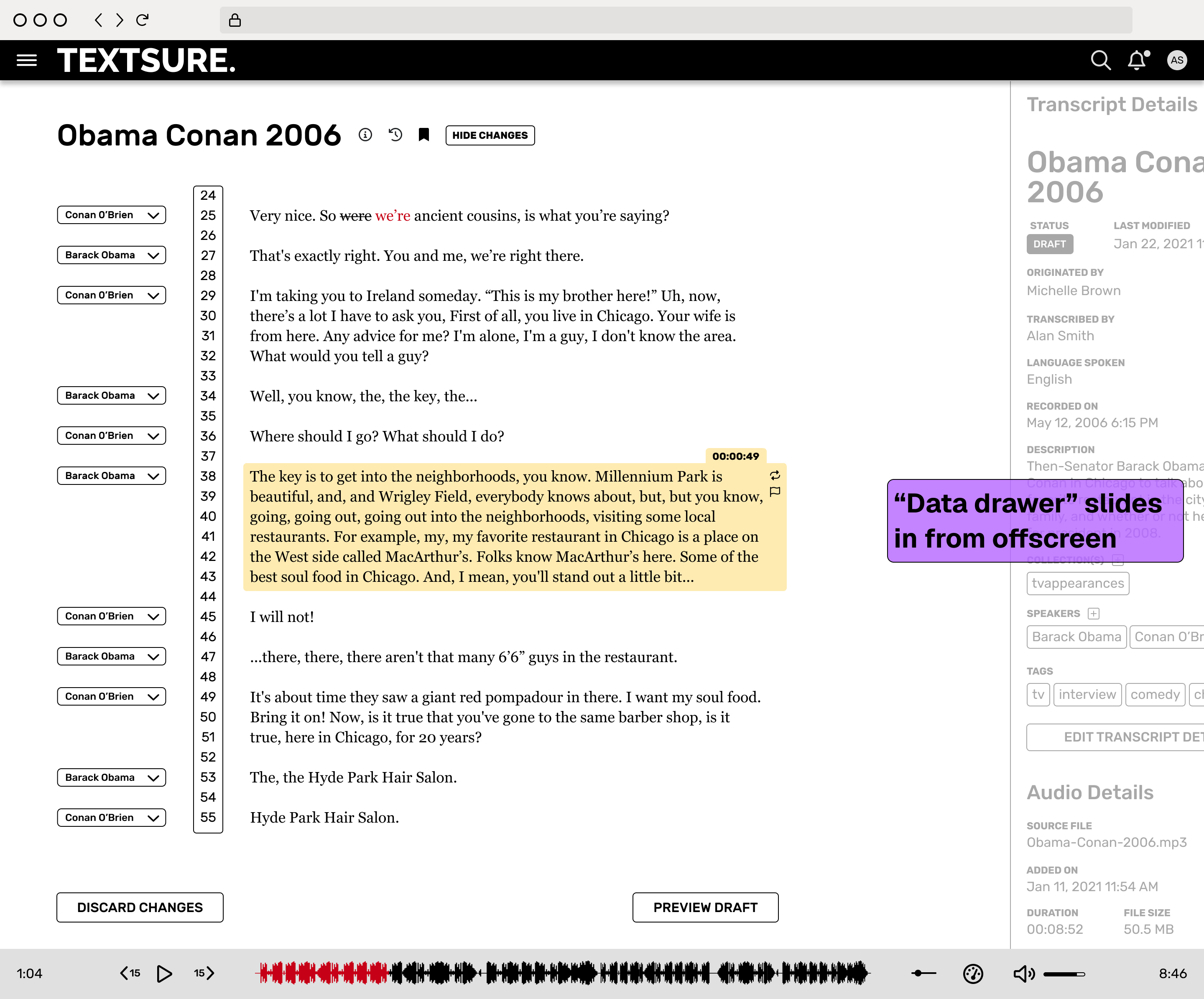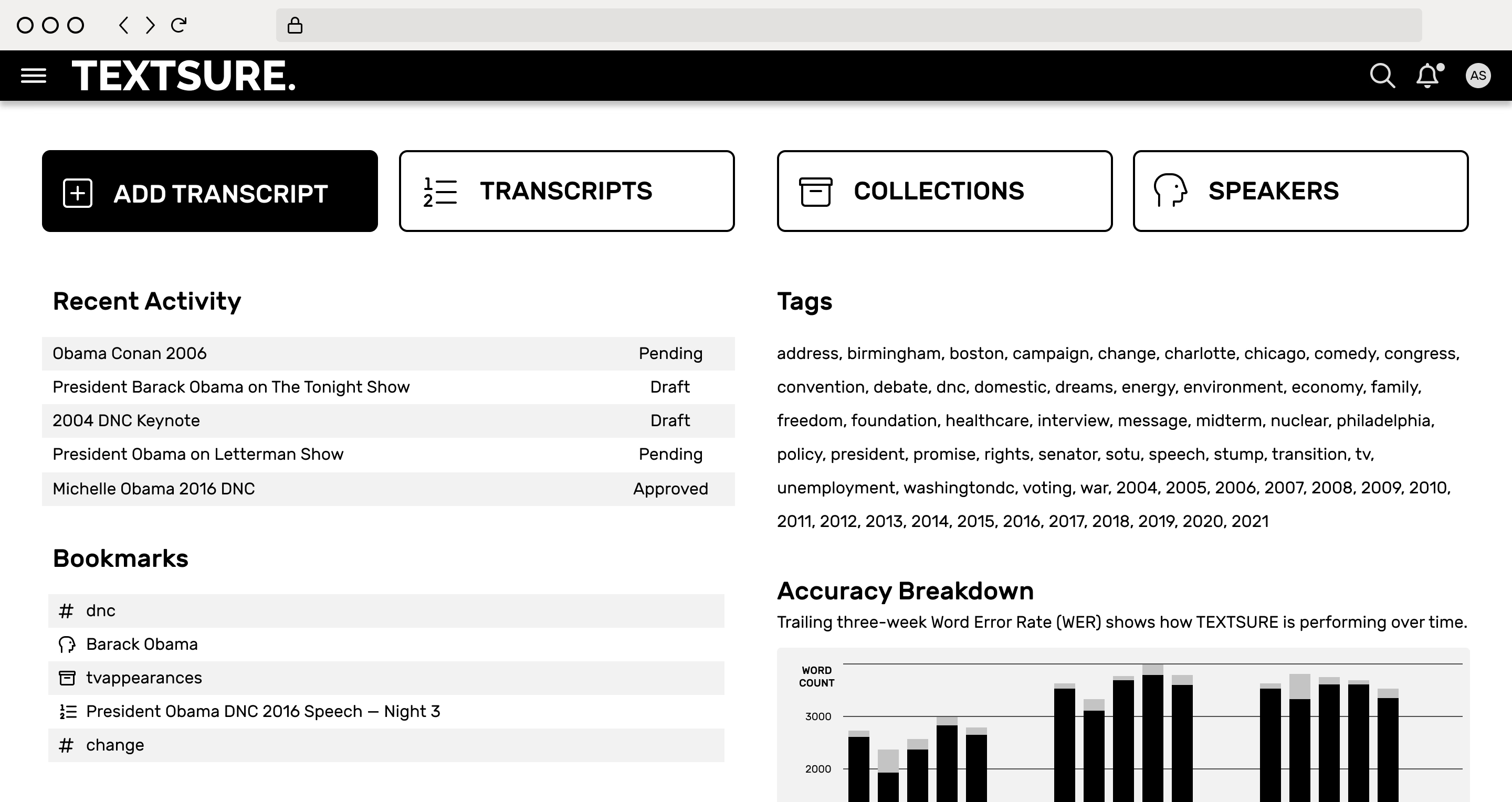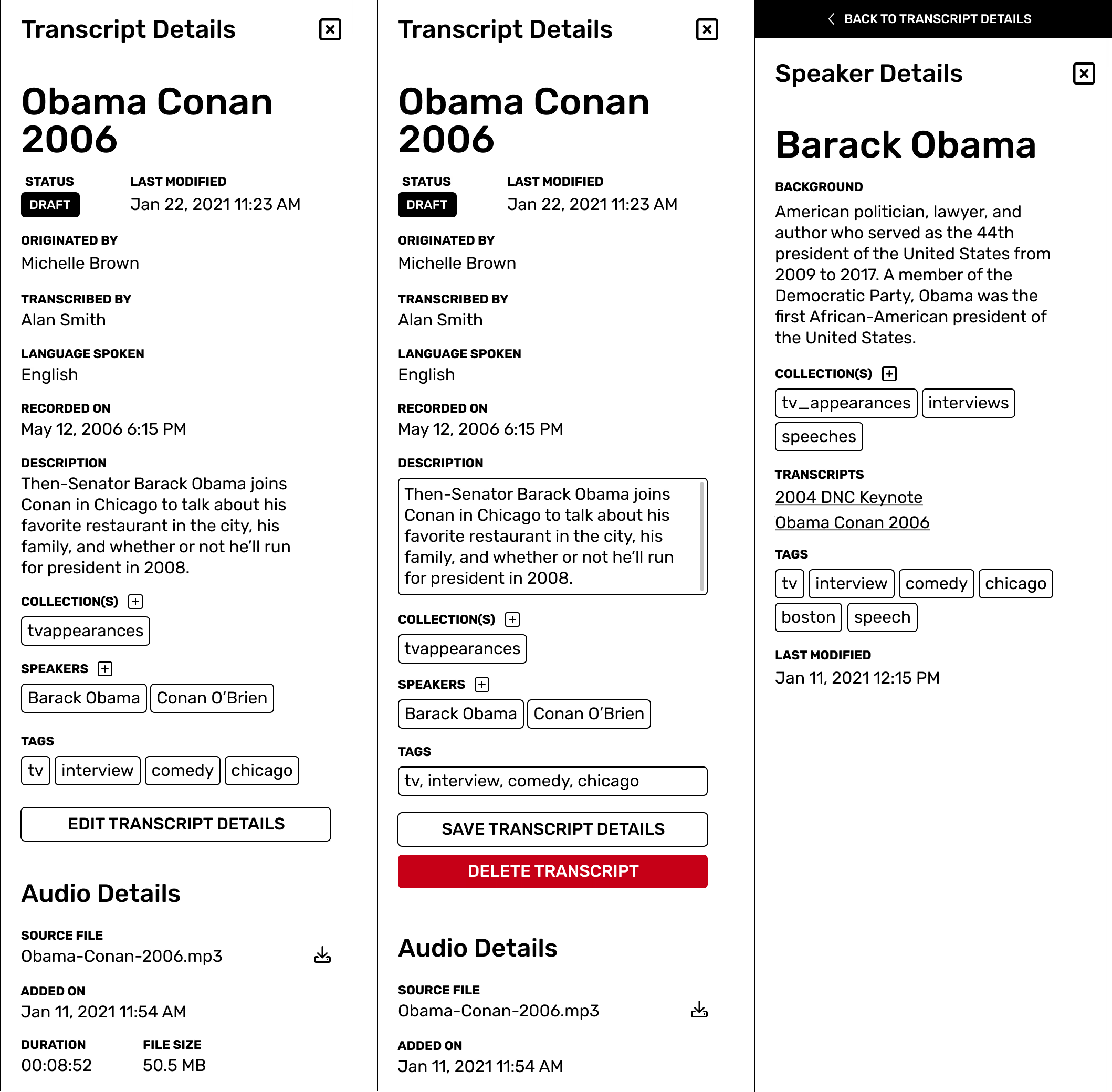Freeing workers to create value
From audio transcription to intelligence analysis at the point of capture

TL;DR
Taking a systems-thinking approach, I led the team to transform transcription from a job of listening to a job of review, cutting time-on-task by more than 70% and unlocking valuable intelligence analysis.
Problem
A highly-controlled, decades-old process had trapped a federal agency’s analysts in a workflow prone to errors and full of inefficiency. How might we make it faster, better, and cheaper? Typically a “pick two, any two” proposition.
Constraint
We had to remove enough friction from the modernization effort for analysts to confidently let go of their individual ways of working while delivering value across all three dimensions without disrupting sensitive investigative workflows.
Key Insight
Humans disengage with repetitive tasks. Automation allowed analysts to focus on proactively delivering actionable intelligence. This reframing of the job-to-be-done surfaced qualitative evidence of improved morale and engagement while reducing change-related risk.

Solution
A project initiated to modernize transcription evolved into an intelligence platform:
- Models trained using slang and other informal speech among groups of speakers provided domain-specific acccuracy.
- Advanced playback and inline data classification tools reduced time-on-task by more than 70%.
- System-assigned metadata (speakers, locations, tags, etc.) let analysts connect individuals, topics, and patterns across seemingly unrelated scenarios.



Outcome
A common metric used for transcript accuracy is the Word Error Rate (a lower WER is better). TEXTSURE averaged an only slightly higher ≤ 4% WER than the agency standard ≤ 3%. Resource costs dropped dramatically and the value derived from the intelligence produced by analysts was immeasurable. One analyst reported an 85% time savings — nearly 3.5 hours — when transcribing a 15-minute conversation using TEXTSURE.